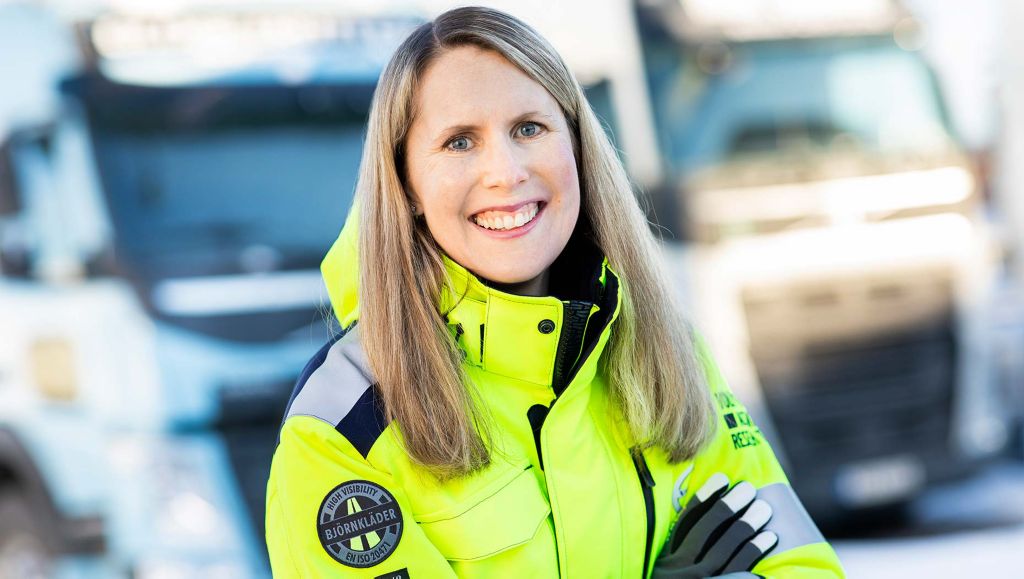Working holistically towards zero accidents


To achieve our vision of zero accidents with Volvo trucks, it is important for us to understand all aspects of traffic safety.
”2019 marks the 50th anniversary of the inception of the Accident Research Team. We started it all by investigating accidents involving trucks in Sweden in order to understand why they occur”, says Anna Theander. ”The insights are valuable input for us to create even safer and more ergonomic trucks for the future.
And even though technological development has advanced, the scope is wider and the methods have been refined – the main objective remains. It’s all about help avoiding accidents and build a safer future. To achieve our vision of zero accidents with Volvo trucks, it is important for us to understand all aspects of traffic safety.”
Human interaction
Traffic safety is complex and preventing accidents stretches far beyond the design and use of trucks. Behind the wheel, you interact with other road users. How road users behave, how they interact and whether they are focused or distracted play a huge role and need to be considered. In traffic, technology can both help and distract us. Volvo Trucks Traffic & Product Safety Director, Anna Wrige Berling explains:
”Take smartphones for instance, they steal our attention. And not only for drivers behind the steering wheel – many pedestrians and even bicyclists look at their phones when crossing the road and fail to pay attention to the traffic situation for truck drivers and other road users.”
The Volvo Trucks Safety Report
Conclusions about smartphones, seat belt use and other findings from Volvo Trucks are accessible in the Volvo Trucks Safety Report 2017. The report is a result of the Accident Research Team’s efforts. And since traffic safety is complex, different skills are needed.
The team
The Accident Research Team is cross-disciplinary and consists of a safety research network, all experts in their field. Their work falls into three different categories. The operational activities include being on standby to investigate accidents. The road safety category involves taking part in various forums. The third category concerns accident statistics and analysis.
“The members of my team visit the scenes of accidents, investigate what has happened and carry out analyses and in-depth studies,” explains Anna Theander. “Our work comes after the development process, when the trucks are out in real traffic. We pass on the result of our work to the product development teams so they can improve safety even further. We are currently focusing on Sweden and other European countries, but in the future we will also be looking at Asia and the rest of the world to find out more about how accidents can be prevented there as well.”
Helped by new technology
Today’s technology also helps the team to understand the scenarios leading to accidents and how to minimize the damages. Information is collected, analysed and in the end, the team members can actually read a scenario in detail.
Automation and safety
The team is also investigating how new technologies such as automation can improve safety.
“When we develop autonomous systems, they must fulfil the high standards we have set within safety. Autonomous systems can bring major benefits in a driver’s everyday work, as an example they can be an advantage in workplaces where drivers can be put at risk. It is important to remember that drivers prevent more accidents than they cause and therefore we need to consider every aspect of traffic safety in our development”, says Anna Theander.
“The future in the field of safety looks bright. Because safety is fundamental in automation, we will be pushed to develop even more sophisticated safety systems. And possibly at a higher pace than has been the case in the past.” explains Anna Theander.
Leads to safer trucks
In the end, the insights and knowledge gained by the Accident Research Team’s efforts are used as input when creating safety systems for Volvo trucks.
The Accident Research Team is one of several means we can use to base our innovation and product development on knowledge. This knowledge is invaluable input when we design tomorrow’s even safer trucks.
Safety systems today
Already today, Volvo trucks has several systems that can increase safety levels – such as Volvo Dynamic Steering, which is designed to provide increased stability at high speeds and assist the driver in critical situations. The system has recently been further developed with two new safety enhancing functions. Volvo Dynamic Steering with Stability Assist is designed to help the driver avoid skidding and Volvo Dynamic Steering with Lane Keeping Assist gives the driver a helping hand when the system detects that the truck is showing signs of drifting towards the lane markings.
The Collision Warning with Emergency Brake system is another example. If the system detects an upcoming collision, it alerts and actively helps the driver to brake the truck to avoid or mitigate a collision. Volvo Trucks also offer systems which attract drivers’ attention if they are distracted or tired, such as Lane Keeping Support and Driver Alert Support.
Aiming towards zero
As legislation is introduced to standardise safety systems, Anna Theander believes that we will come closer to the vision of zero accidents with Volvo Group products. “We must continue to work towards achieving our zero accident vision. There is no other alternative.”